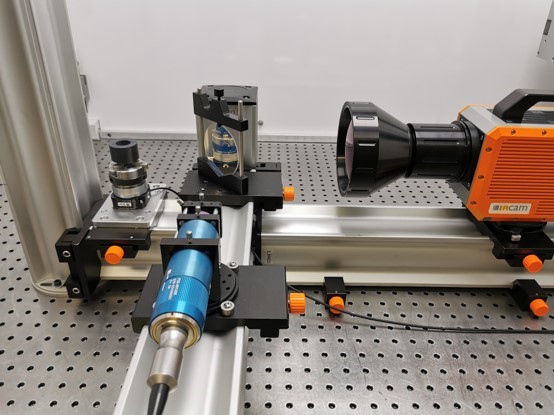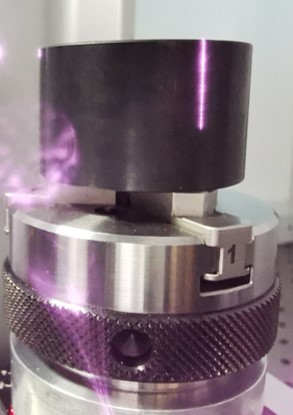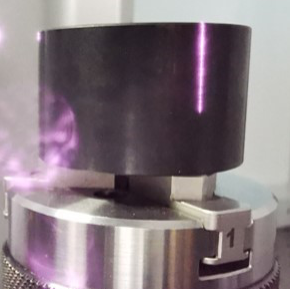Non-metallic materials such as silicon nitride, ferrite or graphite are increasingly used in industry due to their mechanical or electrical properties. In order to ensure the service life for certain applications, quality assurance measures are taken. If you want to replace the time-consuming dye penetrant inspection with a residue-free and automatable method for crack detection, laser scanning thermography is the right choice. Even parts with complex geometries can be subjected to a full inspection with it – and non-destructively.
The application:
Classic applications for non-metallic components where we have already gained inspection experience are ceramic bearings installed in motors and ferrite magnets in the electric motors of fans. This is because if these components are installed with fine cracks, this can lead to part fractures and failures at high speeds. However, there are many other applications to be considered, not only for small electronic components, but also, for example, in aviation, the automotive industry or drive technology. In principle, the technology can also be applied to metallic components and is used primarily when non-contact testing is required, i.e. over somewhat greater distances.

The improvement (for customers):
Thermographic testing is a comparatively inexpensive and rational test method because it is non-destructive, residue-free, can be automated and is fast. In addition, components can be tested without problems even at temperatures significantly above 100 degrees Celsius. Classical methods such as ultrasonic testing are either very well suited for defect detection at greater depths, but blind at the surface, or in the case of dye penetrant testing, neither contact-free nor automatable and also not applicable to warm components.
The task:
Thermographic test stands were to be developed in which the near-surface area of non-metallic parts was to be completely scanned and inspected for defects using an imaging process. The catalog of defects included, for example, cracks of various orientations and sizes, open porosity, bubbles/voids, delaminations and more. These flaws interrupt heat flow and are therefore easy for an infrared camera to detect and image.

The solution:
In our classic laser scan thermography test stands, a laser dot or line is scanned across the component and the resulting lateral heat flow is captured by an IR camera. In this process, the laser spot flies over the component, hence the name “flying spot”. However, edevis also has other options in its program: for example, the required relative movement between the component and the excitation can also be provided by a rotational or linear axis, so that the components are passed under a static laser line.

The project planning:
Interested parties supplied sample parts, on the basis of which edevis carried out preliminary investigations and feasibility studies in its in-house laboratory. Complete test stands for laboratory use were then offered, with laser, laser scanner, laser protection cabin, infrared camera, mechanical structure, software and, if necessary, traversing axes including control. Depending on the thermal conductivity of the material, fast cycle times are feasible in principle, so that inline testing for series production is also conceivable.
